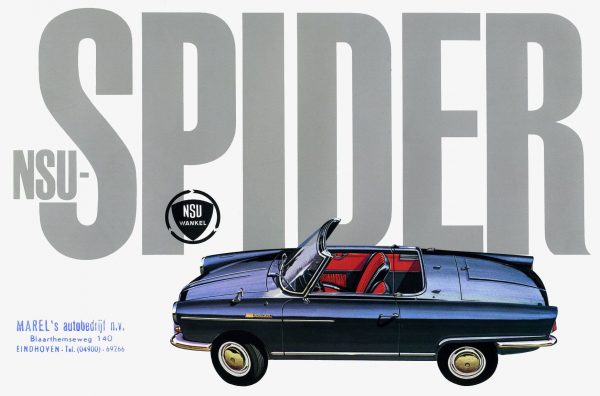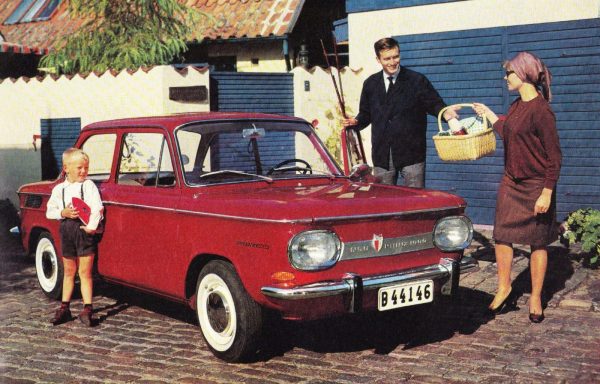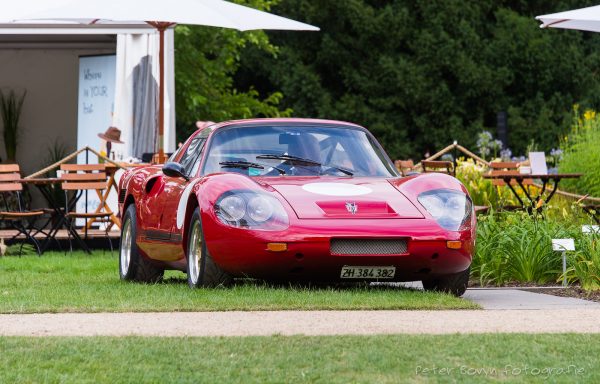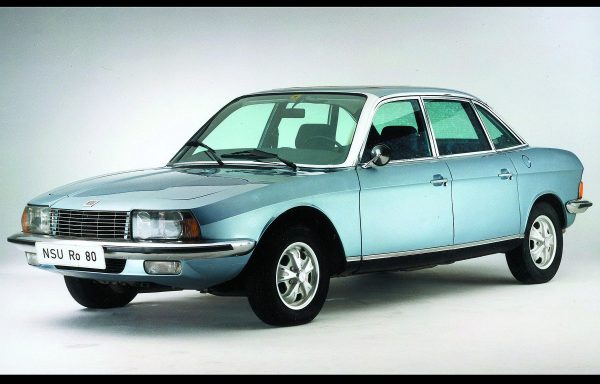NSU Wenkel Spider
The Lightweight Sports Car
The NSU Wenkel Spider, introduced in 1964, was a pioneering roadster that showcased NSU’s innovative spirit and commitment to performance. Designed for driving enthusiasts, the Spider combined lightweight construction with spirited handling, making it a notable entry in the small sports car segment of the 1960s.
The NSU Wankel Spider holds a significant place in automotive history as the world’s first production car powered by a rotary (Wankel) engine. Launched in 1964, the Spider showcased NSU’s commitment to innovation and set the stage for the development of rotary engines in other brands, most notably Mazda. This daring move by NSU combined advanced technology with a lightweight, sporty design that appealed to enthusiasts and tech-minded drivers.
Historical Background
The NSU Wankel Spider was developed during a period when NSU was actively experimenting with rotary engines, thanks to its collaboration with engineer Felix Wankel, who invented the Wankel engine in the 1950s. NSU saw the potential of this compact and unique power source, which was lighter and simpler than traditional piston engines while offering smooth, high-revving performance. The Spider was initially introduced at the Frankfurt Motor Show in 1963, generating significant interest due to its innovative technology.
Only around 2,375 Wankel Spiders were produced between 1964 and 1967, making it a rare and collectible vehicle today. Despite its limited production run, the Spider played a vital role in demonstrating the Wankel engine’s feasibility and performance potential, leading to further development and use in NSU’s future models, as well as influencing other manufacturers worldwide.
Technical Specifications
The NSU Wankel Spider combined the compact and lightweight advantages of the rotary engine with a sporty, open-top design. Here’s a breakdown of its technical details:
- Engine Type: Single-rotor Wankel engine
- Displacement: Equivalent to around 498 cc (rotary engines typically displace less than piston engines for a similar power output)
- Compression Ratio: Approximately 8.5:1
- HP Output: 50 hp at 5,500 rpm
- Torque Output: Around 7.6 kg/m at 4,500 rpm
- Transmission: 4-speed manual
- Length: 3,800 mm
- Width: 1,525 mm
- Height: 1,250 mm
- Weight: 700 kg
- Wheelbase: 2,200 mm
- 0-100 km/h: Approximately 14 seconds
- Top Speed: 155 km/h
Design and Mechanical Features
The Wankel Spider’s design emphasized its sporty and lightweight nature, making it an attractive option for drivers looking for a unique, open-top driving experience. The layout of the car was largely influenced by the compact size of the rotary engine, allowing designers to keep the vehicle’s weight low and optimize its balance.
- Rotary Engine Innovation:
- The Wankel engine’s primary advantage was its size and simplicity. Unlike piston engines, which rely on complex reciprocating motion, the Wankel engine operates with a single, continuous rotary motion. This allowed NSU to fit the Spider with a smaller, lighter engine that produced smooth, high-revving power.
- The rotary engine design also reduced vibration and provided a quieter, smoother ride compared to conventional engines.
- Lightweight Construction:
- The Wankel Spider featured a lightweight steel body with simple yet aerodynamic styling. This design helped keep the weight at just around 700 kg, which, combined with the rotary engine, made for nimble handling.
- Its small size and open-top design contributed to a fun, sporty feel, catering to drivers interested in a compact yet lively sports car.
- Suspension System:
- The Spider used a MacPherson strut front suspension, which provided good stability and ride comfort for a car of its size.
- At the rear, the car was equipped with a swing-axle suspension, offering reasonable handling given its rear-engine layout, though it could be prone to oversteer at high speeds or on sharp turns.
- Braking System:
- The Spider was equipped with front disc brakes and rear drum brakes, which offered adequate stopping power for a car of its weight and power output. This setup provided reliable braking performance, enhancing the car’s safety and control.
- Body and Interior Design:
- The body featured a sleek, open-top design with simple yet stylish lines, emphasizing its sporty nature. The car’s compact dimensions made it well-suited for urban environments and winding roads.
- Inside, the Wankel Spider was minimalist, focusing on essential controls and gauges. The interior was designed to provide a comfortable and immersive driving experience without excessive frills.
Driving Experience and Performance
The Wankel Spider’s driving experience was unique, largely due to its rotary engine’s smooth, high-revving nature. Unlike traditional piston engines, which had a distinct idle and acceleration sound, the Spider’s rotary engine produced a continuous, hum-like tone. Drivers praised the car for its smooth power delivery and light, agile handling, particularly in urban settings and on winding roads where its low weight and responsive engine were put to best use.
However, the Spider also faced some challenges. The rotary engine, while advanced, was prone to reliability issues, particularly with rotor seal wear. This limited the engine’s lifespan and required more frequent maintenance compared to conventional engines, which affected its popularity among the broader public.
Legacy and Impact
Despite its relatively low production numbers, the NSU Wankel Spider has an enduring legacy due to its status as the world’s first rotary-powered production car. It demonstrated the potential of the Wankel engine and paved the way for NSU’s future models, such as the NSU Ro 80, which also used a rotary engine. The Spider’s technical achievements had a ripple effect throughout the industry, inspiring other manufacturers, most notably Mazda, to adopt and refine the Wankel engine for their own vehicles.
The Spider’s innovative design, combined with its rarity, makes it a highly sought-after classic today. Collectors and rotary engine enthusiasts prize the Wankel Spider for its historical significance and unique driving experience. While the rotary engine ultimately remained a niche technology, the NSU Wankel Spider stands as a symbol of NSU’s pioneering spirit and commitment to engineering innovation, marking a significant chapter in automotive history.




